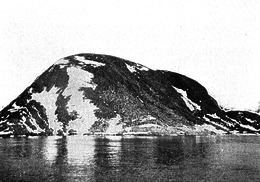Total islands 6 Highest elevation 300 m (1,000 ft) Elevation 300 m | Archipelago Carey Islands Major islands Nordvestø Population uninhabited Municipality Qaasuitsup | |
 | ||
Simon lowe rachel carey islands in the stream
The Carey Islands (Danish: Carey Øer; Greenlandic: Kitsissut) are an island group off Baffin Bay, in the Qaasuitsup municipality, NW Greenland. Located relatively far offshore the Carey Islands are the westernmost point of Greenland as a territory. The sea surrounding the islands is clogged by ice most of the year.
Contents
Geography
The archipelago consists of six desolate islands, a few small islets and a number of rocks awash. It is located about 100 km to the west of Thule Air Base and 50 km to the SW of Cape Parry.
The nearest settlement is Moriusaq to the east on the coast of Greenland, abandoned since 2007.
Main islands
Islets
History
The islands had been inhabited by the Inuit in the past; remains of their dwellings were found by Clements Markham in August 1851.
The Carey Islands' were named by the 1616 Bylot-Baffin Arctic expedition after Allwin Carey, one of the financiers of the venture.
Swedish naturalists Alfred Björling and Evald Kallstenius stopped at the Carey Islands in 1892 during an expedition on schooner Ripple to pick up supplies at a cache there. The Ripple, however, was driven on shore and wrecked. The men attempted to sail a small sloop back to Etah, but were forced to return to the Carey Islands.
According to letters left by members of the ill-fated expedition in a cairn on the islands, the remaining four men attempted to sail their open boat 80 miles to Ellesmere Island:
Forced by bad weather to linger on this island for a long time, I now set out on the tour to the Eskimos... on Ellesmere Island. As I hope that a whaler will visit the Carey Islands next summer to rescue me and my companions, I will try to reach the islands again before July 1. We are now five men, of which one is dying.
In June 1893, the crew of the Scottish whaler Aurora spotted a wreck on the Carey Islands. They found the Ripple, a man’s body buried under a pile of stones, and Björling's letters. No trace of the other four men, or the small boat, was ever found.
